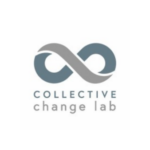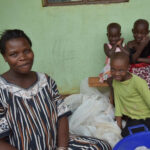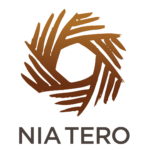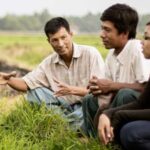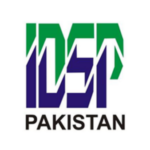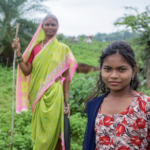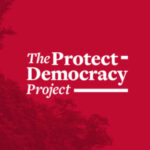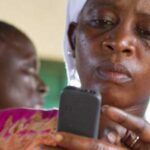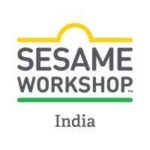What’s Working
Insights About Social Innovation
We’re at a key moment in history where many organizations that have emerged across all different sectors, and all different sorts of stakeholders, need to come together. We need to be able to work collaboratively with each other. We need to recognize the diverse gifts that we can each bring to this work, and figure out how to create that which is greater than the sum of the parts.
David Levine, American Sustainable Business Network
The Solutions Insights Lab asked dozens of successful social entrepreneurs how they made a difference, using a structured interview format drawn from the solutions journalism approach. These changemakers work on the frontlines from Afghanistan to Zimbabwe. They are rural and urban. They work in democracies and dictatorships. They solve all kinds of problems in all kinds of communities: they help women raise capital to start businesses, or bring healthcare to rural areas, or help off-grid villages get sustainable energy.
These diverse interviewees consistently shared similar insights about how they succeeded and what kinds of challenges they have faced, and continue to face. Just a few strategies, it seems, as well as insights about how to implement them, are key to creating all kinds of change.
Solutions Insights Lab experts manually tagged nearly 400 interviews and stories — by geography, the type of community being served, and issue area, but also by the strategies that produced success. These tags were generated by the interviews themselves rather than fitting the interviews into a pre-existing taxonomy. This is the first Solutions Insights Lab conducted to date, and while this is a significant sample, it is just a subset of a much larger universe of knowledge. Yet even drawing from this modest sample we were able to glean lessons and create a framework based on their commonalities that can help other leaders create change.
The framework includes nine high level insights. It helps us understand the common pillars of system change. Sharing this kind of evidence-based knowledge can empower those working on social change, speed up the process of learning and innovation, and contribute to the refinement and scaling of solutions. This approach offered great value and promise for scaling it to broader and deeper inquiries with many more participants.
Jump to:
Build Partnerships and Collaborative Effectively
We need to stop working in silos… Meaningful development can only come when we all come together, share our best practices, replicate them if it’s possible, and also realize that each one of us in this world has a role to play.
You must build trust and relationships before you build strategy … It’s little things. Doing check-ins at the beginning of meetings and finding out where people’s hearts and bodies are can have a profound difference in the conversation.
[A] lesson that I’ve learned is the importance of being ego-free and focused on impact. All too often, in a world where it feels like resources are scarce, organizations are competing to have their brands or their logos on an initiative or a partnership.
A single organization cannot create and sustain systems change alone. It takes collaboration among networks, partnerships and coalitions to maximize the strengths and fill in the gaps of each partner. Successful collaborations require that all parties work toward a common cause rather than for individual accolades. To do this requires transparency. Each changemaker or organization must identify its specific expertise — as well as where it has gaps in its own competencies — and then work to create a holistic solution with others who fill those gaps. Partners should be treated as co-creators, not as order takers, each with specific measures of influence. Important ingredients also include organizations that act as conveners, or system orchestrators, to help facilitate mutually beneficial and effective partnerships and a funding ecosystem that minimizes competition among organizations.
Partner with Government Agencies
You need to align with the priorities of the country and the government so that you can be able to push things. Proactively understand the five-year development plan.
Partner at every level. [We focus on] co-implementation, co-financing, on-the-ground partnership with a view that we want to walk away. We’ll reduce over time, and they take more ownership.
We don’t trumpet our work; we allow governments to take credit for things. In many cases, governments are not comfortable with the idea that they’re taking policy prescriptions from a foreign NGO, and we’re perfectly happy to take a quiet backseat.
Government partnerships can provide access to funding on a larger scale. They also increase the possibility that the government will take over a program, which provides longevity and scope (i.e., geographic spread). Productive government partnerships are built by finding champions across different agencies and levels of government — even in seemingly repressive systems. Changemakers learn how to make government officials comfortable adopting policy or program ideas from NGOs. They study existing government plans and priorities and align their programs to meet those needs. Finally, they build capacity and buy-in within governments so the governments can eventually take full ownership of the work over time.
Make Funding Flexible
[S]how donors the reality of the work and how they need to evolve their thinking to be supportive versus coming in with their own agendas, top down, their requirements that don’t fit or are unrealistic.
Our work is about relationship building and being as flexible as possible in providing resources in a way that is guided by the community receiving those resources, not by what we think should happen in that place. And there’s an inherent tension, in that funding mechanisms are often not flexible enough to allow for that.
It’s not only about raising funds, it’s about funds that are too restrictive, that do not give flexibility for groups like us to actually adopt what is needed on the ground.
Systems change requires organizations to be flexible, to quickly pivot if needed. Funding can’t be tied up with so many restrictions as to prevent this flexibility. Also, funding must be for the long haul and not for just a few years, because social changes — particularly at the systemic level — do not happen in a year or two.
Involve the People Most Impacted By the Problem as Co-creators of the Solutions
Communities are leading the process, because partners come and partners go, but the community members stay. If we build the capacity of local human resources, we can certainly sustain our efforts more over the long term.
We live here. Out of our 2,500-person staff, 98% are Africans — people who live in the community, who work in the community, who are part of the community. We are not a fly-in, fly-out agency. We live within the communities that we serve, so there’s a vested interest, especially in the community health workers that we train, that their community is taken care of.
Zeroing in on iterative prototyping and getting feedback and involving farm customers in co-creating these products and services … You don’t get stuck on one formula and stick to it, you really stay close to what the customers want and need.
Successful solutions rely on the input and insight of people with firsthand knowledge of the problems. Centering their knowledge requires an ideological shift so that impacted communities are seen as stakeholders in the solutions, not beneficiaries of services. Communities should be involved in defining the problems and coming up with solutions; their voices should be amplified, and organizations must support the work communities are already doing. Some organizations do this by bringing people with firsthand experience into the leadership and workforce of the organization. Others invest time and resources talking to and building trust with communities that are most impacted by the problems. Developing leadership capacity within communities is also a way to ensure that communities are brought in and have the capacity to sustain solutions locally.
Offer Resources and Opportunities that Nurture Individual Self-empowerment
We dedicated ourselves to foster[ing] the leadership of girls and women by creating professional community midwives as community leaders in maternal health care, because that was the need of the community. … This has made the women so strong that the whole family and the male family members are now being identified socially through the midwife.
We already sent 5.5 million children to school across five countries. This is fundamental for transforming the system. More girls completing school means more female representation at leadership levels in all spheres. If we want to have female representation at the decision-making table, it needs to begin with sending more children to school.
The stories of each one of our community agents reflects how the added income helps them become a core part of the community, get access to potential livelihood sources and get agency, which they use to improve their families and bring them out of poverty.
Sustainable solutions create opportunities for people to strengthen their individual agency and decision-making power. Making it possible for individuals and communities to improve their access to information, gain new skills and find secure ways to generate income increases their autonomy, agency and decision-making capabilities within their households, communities and society at large. Organizations do this by providing support to stay in school, supplying opportunities to gain new skills through training programs, increasing access to financial capital to invest in income-generating activities, and offering interventions that enable people to take control of their personal health and safety.
Focus on the Long Haul
There are going to be wins that we can feel good about, but then the work goes on. We need to make sure that we can, on a really hard issue where people feel it personally in lots of different ways, enable the team to be in it for the long haul, to be resilient, to operate in a sustainable way, to realize that it does matter even if the challenge hasn’t gone away.
Funders and implementers need to have a long-term horizon and vision and not just do one-year, two-year, three-year grants that address one piece of the problem.
We know that change isn’t linear. We know that it’s not a nice tidy project cycle where I give you two years funding and then you come back to me at the end of two years and say, ‘Woo-hoo, gender-based violence is over.’ That’s not how change works at all.
Changing well-entrenched systems means dealing with interrelated components, ranging from policies and practices to individuals and institutions. This work is slow, and success requires aiming for lasting impact rather than quick fixes. Consistent efforts sustained over time allow changemakers to get at the root causes of a problem and establish new norms and practices. But this requires funders and programmatic planners to be in it for the long haul.
Share Data and Tools for Free
By creating an open-source platform that anyone can build on without Medic’s involvement or our help means that more resources can go towards patient care. More resources can go towards paying health workers.
Everything we produce is an open data source and is free for anyone to use. [I]t’s possible for anyone to reproduce because you don’t need an infrastructure and so on. The model is based on that so it can be democratized easily.
We have developed this platform, and we give it to anyone in the world who wants it, who has a mission for equity. We ask them to apply it in any area … We have close to a hundred networks now.
Many solutions need to be transparent and free to achieve the broadest possible scale, providing the necessary information and permissions for others to replicate them. When responses involve new technologies, they should be created using free open-source licenses or open-source software.
Shift Societal Ideas and Attitudes
We use a lot of media, we use a lot of entertainment, we use pop culture … We always use local culture – local cultural songs, art forms, stories, whatever they practice at home.
Narratives evolve through stories told persistently over time, so we work with storytellers in the media, and in the arts and culture space.
When we say we create ecosystems, we start with household dialogues. In many cases, we enable local partners to have household dialogues, where we dismantle gender and power dynamics at the household level.
Deeply entrenched ideas and beliefs can limit the opportunities of certain groups. Working to change dominant narratives — such as prevailing patriarchal or racially biased paradigms within society — is an important goal to achieve systems change. Narrative change happens when you can engage in a dialogue that gets widespread attention. Organizations that spoke about the importance of narrative change in their work most often accomplished this by engaging the court of public opinion. This can occur through conversations playing out in the media, boots-on-the ground training and education programs within communities, and setting up an infrastructure so that community members themselves spread the messages. Shifting individual and institutional behaviors requires moving the public.
Adapt Solutions to Fit the Cultural Context
If we want solutions to work, if we want people to access care, if we want to deliver life-saving interventions, we have to deliver them with a deep understanding of the context, of the fragility or the strength of the system, of the community.
While we have certain policies and frameworks and best practices, those are all offered as tools for the local teams to use and to adjust and adapt as they need. That’s a really important piece of making sure that this is a scalable model, that it’s adjustable, that it’s flexible, and that it always is contextualized for the local community’s needs.
You just can’t cut and paste a methodology. You need to validate it, and you need to contextualize it.
In order to be effective, and get local buy-in, solutions must be built taking into account specific cultural and social contexts. Systems change will not happen using a one-size-fits-all approach, particularly in terms of applying solutions created in the West in other cultural contexts. To scale, social entrepreneurs and other innovators don’t have to reinvent the wheel every time they want to implement a solution in a new context. They’ve developed strategies to work within a theory of change framework and best practices while maintaining enough flexibility so the solution can be adapted to local environments as needed. Many interviewees spoke about starting with a more general, universal template that can be adjusted and adapted — based on the advice of local experts — for new contexts. Some organizations act as conveners rather than owning the whole process, to tailor solutions to cultural contexts.


